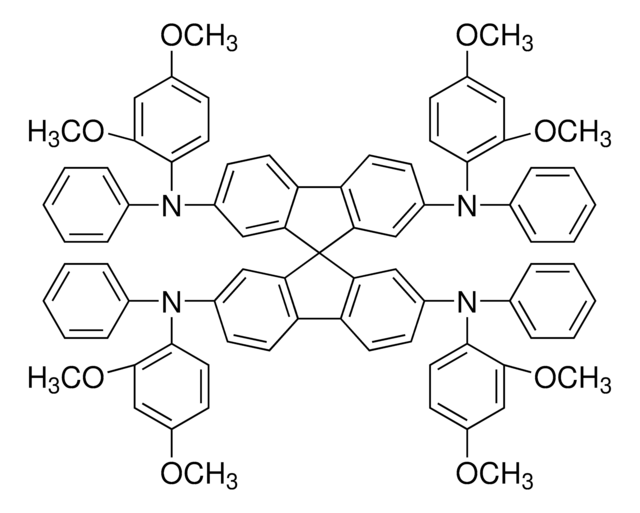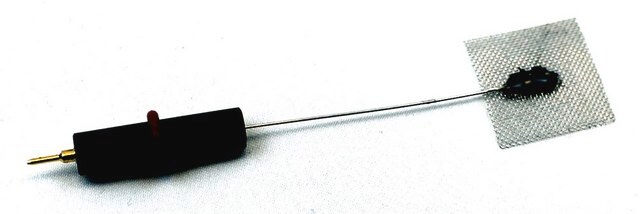791539
Titania paste, reflector
Synonym(s):
Greatcell Solar® WER2-O, TiO2 paste
About This Item
Recommended Products
description
Crystal Structure: > 99% anatase (analysis carried out on starting material, prior to paste manufacture)
Quality Level
form
paste (white)
concentration
20.0 wt. % (+/- 1.2 wt%)
avg. part. size
150-250 nm (scatter)
viscosity
15000-25000 mPa.s (Analysis carried out with 20mm 4 degree cone/plate; 40 s-1)
InChI
1S/2O.Ti
InChI key
GWEVSGVZZGPLCZ-UHFFFAOYSA-N
General description
Application
Scattering Titania Paste contains highly dispersed anatase scattering particles (150nm to 250nm). This paste produces a non-active scattering layer when applied onto a pre-printed active layer.
After drying; this paste must be fired – together with the pre-printed active layers – at or above 500°C. This results in an opaque sintered layer; with a thickness of ~3μm for one printed layer; when using a 90T mesh screen.
Storage: Store in the dark at 20°C
Legal Information
Greatcell Solar® is a registered trademark of Greatcell Solar
Signal Word
Warning
Hazard Statements
Precautionary Statements
Hazard Classifications
Eye Irrit. 2 - Skin Irrit. 2
Storage Class Code
10 - Combustible liquids
WGK
WGK 1
Flash Point(F)
195.8 °F
Flash Point(C)
91 °C
Choose from one of the most recent versions:
Certificates of Analysis (COA)
Don't see the Right Version?
If you require a particular version, you can look up a specific certificate by the Lot or Batch number.
Already Own This Product?
Find documentation for the products that you have recently purchased in the Document Library.
Customers Also Viewed
Articles
Few Monolayer Atomic Layer Deposition (ALD) on Surfaces and Interfaces for Energy Applications
Dye-sensitized solar cells (DSCs) are 3rd generation solar cells combining the promise of high efficiency with low production costs.
Organic photovoltaics (OPVs) represent a low-cost, lightweight, and scalable alternative to conventional solar cells. While significant progress has been made in the development of conventional bulk heterojunction cells, new approaches are required to achieve the performance and stability necessary to enable commercially successful OPVs.
While dye sensitization as the basis for color photography has been accepted for a very long time,1 attempts to use this principle for the conversion of solar light to electricity generally had resulted only in very low photocurrents, below 100 nA/cm
Our team of scientists has experience in all areas of research including Life Science, Material Science, Chemical Synthesis, Chromatography, Analytical and many others.
Contact Technical Service






![Dipyrazino[2,3-f:2′,3′-h]quinoxaline-2,3,6,7,10,11-hexacarbonitrile 95% (HPLC)](/deepweb/assets/sigmaaldrich/product/structures/151/558/c0e2c95f-5228-4864-a7a5-4b9765a19840/640/c0e2c95f-5228-4864-a7a5-4b9765a19840.png)


